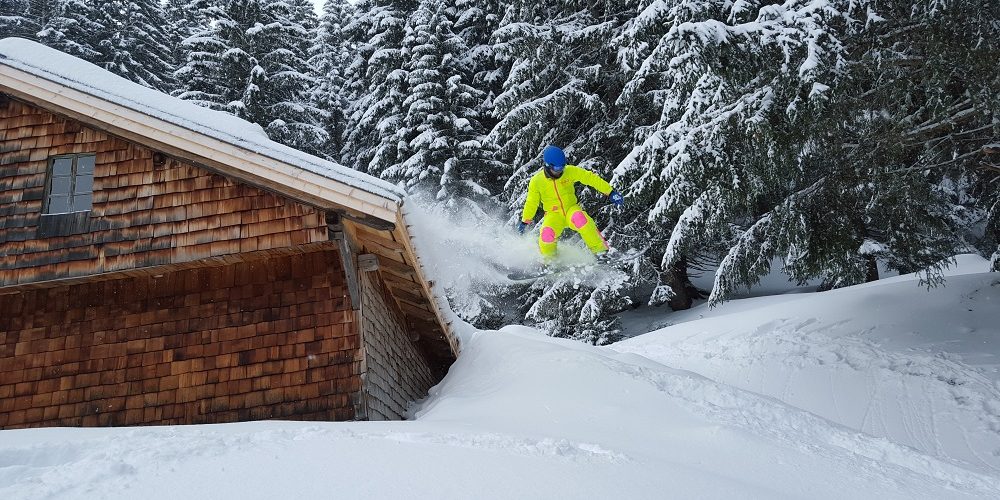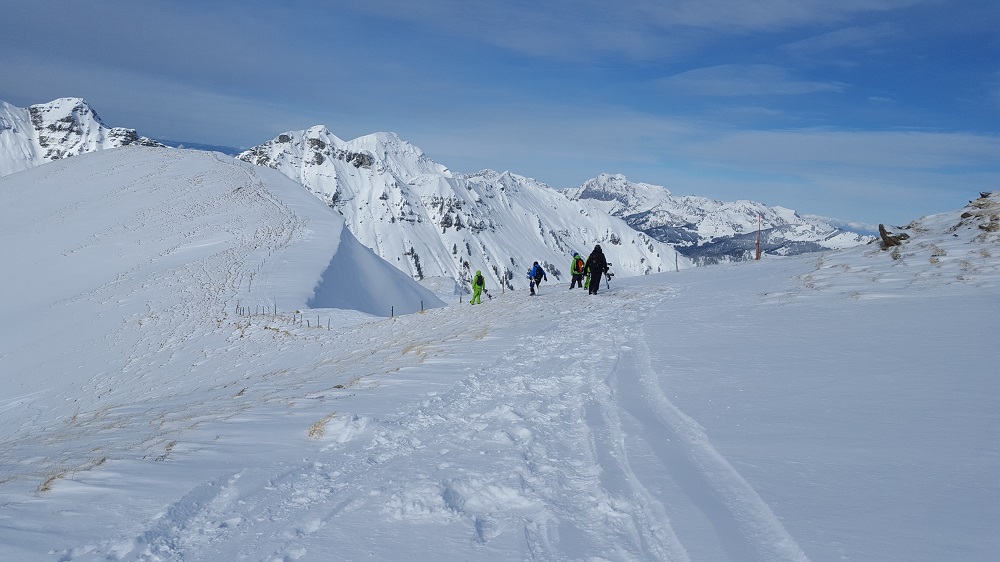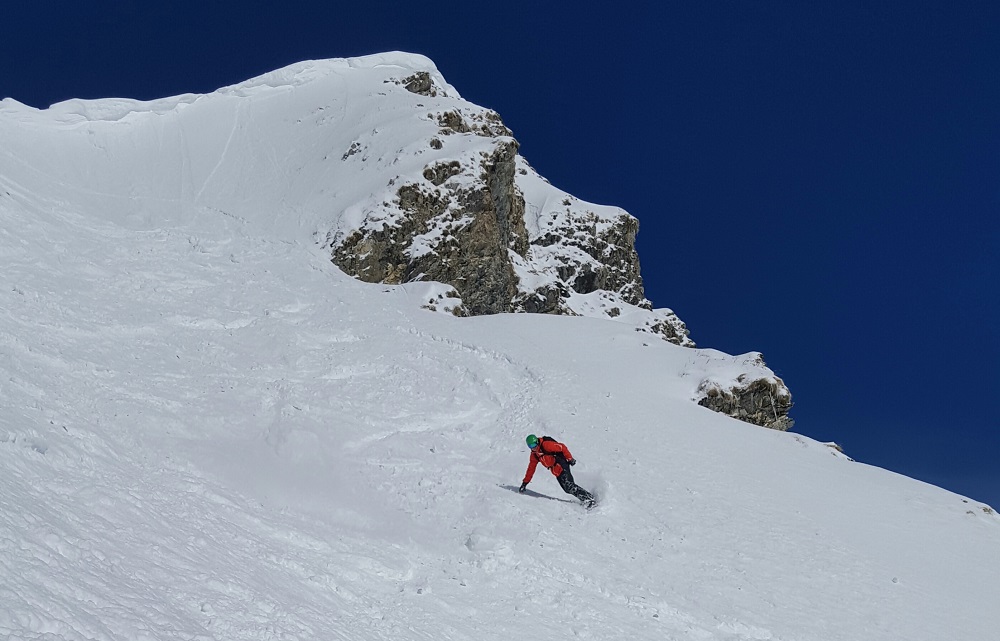During 10 brilliant days in Morzine, I joined the Mint Snowboarding Backcountry Camp in exploring the excellent Portes du Soleil, while learning about avalanche and off-piste safety. I learned that ultimately you’re never 100% safe when heading off-piste, but the risk can be minimised by following these tips:
Research
Before you even contemplate what off-piste routes you’d like to tackle, read, and understand, the avalanche bulletin – there’s far more to it than an avalanche risk number. It informs you about the weather, snowpack and how risk varies by altitude, aspect and time.
You can identify where wind loading could be a problem, what kind of slabs are forming and how recent and future weather could affect the snowpack. From this you can determine combinations of steepness, altitude and aspects to avoid, and decide which slopes will be safest at different times of the day.
Gear
When heading into the backcountry everyone in your group should have an avalanche transceiver, shovel and probe. You also need to know how to use them, so get yourself on an avalanche course and regularly practise rescues
The Mint Snowboarding Backcountry Camp was excellent. Not only did we learn a huge amount, but we also spent five days freeriding fresh lines in the seriously underrated Portes du Soleil. There are avalanche courses in most resorts – some are even free.
Obey signs
Don’t ignore closed signs. It may look safe (and inviting), but ski patrol only close parts of the mountain that are dangerous.
Know when to say no
Before tackling your intended route, look out for danger signs such as cornices, wind loading, cracks and avalanches. Understand the local snowpack by digging a snow pit to identify weak layers. Heed nature’s warnings and don’t be afraid to say no.
Steepness
Most avalanches happen on slopes between 35° and 45°; slopes under 30° are considered avalanche safe. So if the risk is high, stay away from the steep stuff.
Single file
When on a risky slope go one at a time. This reduces the load on the snowpack, decreasing the chances of a slide, plus you won’t all get caught in an avalanche so can perform a rescue if the worst happens.
Stay vigilant
On shallower terrain remain aware of the snow quality, as it’s a great avalanche indicator for steeper slopes. If snow collapses – whumphs – beneath you, it means there are weak layers in the snowpack, and cracks appearing around your board/skis indicates a cohesive slab that could slide.
Where to stop
Don’t stop at the base of a slope. Move to the side, preferably on a slightly raised area in case anyone above triggers a slide. Unless unavoidable, do not go out of hearing range or line of sight from your group.
Guide
The Mint Snowboarding Backcountry Camp convinced me that a local guide is invaluable for finding fresh snow and safe lines. Avalanche safety is highly complex, so despite now being armed with knowledge, I’ll still be hiring a guide for my backcountry adventures.
Mint Snowboarding offer a range of off-piste courses. Backcountry Camp: €635. mintsnowboarding.com
Morzine: morzine-avoriaz.com/
Rude Chalets: rudechalets.com
Swiss Air: swiss.com





